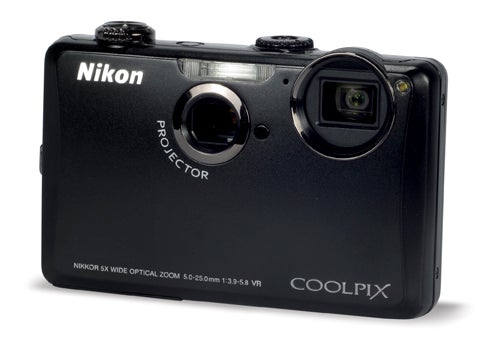Nikon's second projector-equipped compact camera improves on its headline offering. The What Digital Camera review of the Nikon S1100pj puts it through its paces
Nikon Coolpix S1100pj Review
Nikon created much interest last year with the launch of the first projector-equipped digital camera, the S1000pj, and many predicted that the feature would soon be commonplace. While we’ve yet to see it stray outside of Nikon’s own Coolpix range, the company has at least updated the model in which it debuted, with the new Nikon S1100pj.
A jump from 10 to 14 lumen means that the new projector boost brightness by 40% over its predecessor, and Nikon claims that this makes it easier to view in brighter conditions. The company goes on to state that the image from it can be displayed at up to 47 inches, while the supplied remote control facilitates convenient operation for image and video playback.
The sensor has also been revised to now offer an effective pixel count of 14.1MP, and the LCD has been equipped with touchscreen operation, as well as receiving a boost to 3 inches and a 460k-dot resolution. The lens has remained the same, however, with a 5x optical zoom range from 28-140mm, and still offers Vibration Reduction.
Other updates include compatibility with Mac and PCs, to allow for the projection of images, videos or presentations that originated elsewhere, and there have also been some significant changes to the design of the camera for both cosmetic and practical reasons.
While the rear of the previous S1000pj adhered to a more traditional layout, the Nikon S1100pj strips everything down to just three buttons, one each for shooting mode, image playback and movie recording. Any other operation takes place via the 3in touchscreen, which largely involves small and unresponsive buttons. In fairness, a stylus has been provided to make this task easier, but this won’t be to everyone’s liking. Why not simply make the buttons a touch larger?
The design changes made by Nikon also improve the operation of the projector. The slider to adjust focus has now been replaced by a ring which is marginally easier to use, though the button in its middle which activates the projector is painfully small. Clearly, this is a camera with the nimble-fingered in mind.
Focusing is surprisingly prompt, and even when the shutter release button isn’t being operated the camera continuously autofocuses to provide an in-focus feed. Likewise, the camera zooms through its focal range fairly quickly, although this does make it harder to stop at a particular focal length.
The projector does well to display a largely accurate image, and can be left on a slideshow setting for displaying all images on a card. It’s still a little difficult to see the projected images and videos unless the conditions are right, with a general muddiness and lack of contrast when there is a little ambient light, but otherwise results are generally good.
Yet, while the headline feature impresses, image quality is mixed. Superficially the only problems appear to be with an inconsistent white balance system, which results in the odd image appearing oddly cold, but closer scrutiny reveals a number of other issues. Despite some good detail in the centre of the frame, images at all sensitivities generally appear soft and lacking in detail, presumably from the noise-reduction system, and even at ISO 80 in good light noise gives images a gritty texture. The level of sharpening applied to images also occasionally results in haloing, while, conversely, while edges and corners of the frame are plagued by softness.
Purple fringing is also frequently visible in images, although chromatic aberrations otherwise are reasonably controlled. There are a few pluses; colour is pleasing and accurate in good conditions, and, aside from an occasional overexposure, so is the metering system. There’s also pleasingly little distortion from the lens at wideangle. Nevertheless, from a £350 camera, a lot more is expected.
Verdict
The Nikon Coolpix S1100pj is arguably a better-looking camera than the model it replaces, and it's hard not to be impressed with its headline feature. Even so, frustrating operation and unreliable image quality make it a difficult camera to recommend.





